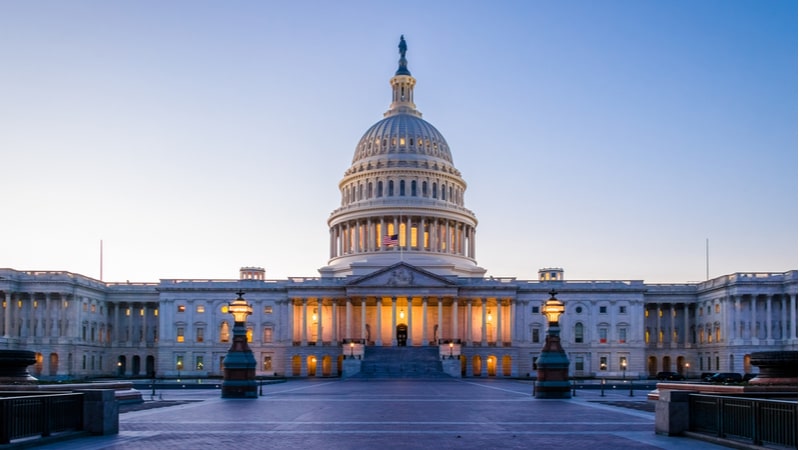
Sens. Jack Reed, D-R.I., and Jim Inhofe, R-Okla., formally opened deliberation for the Fiscal Year (FY) 2023 National Defense Authorization Act (NDAA) on the Senate floor on Tuesday. However, a final vote on the bill is unlikely to occur until after the midterms.
The annual bill authorizes the Department of Defense (DoD) spending levels and sets overarching military policy to equip, supply, and train our troops and provide for military families.
On June 16, the Senate Armed Services Committee approved the military spending bill and voted 23-3 to send it to the full Senate for consideration.
The version introduced on the Senate floor – passed by the Senate Armed Services Committee and modified with 75 amendments from other Senators and committees – authorizes $817 billion for the DoD and $29 billion for national security programs within the Energy Department.
“The FY23 NDAA will be a substitute for the House-passed NDAA. This substitute will be modified with a package of amendments that have been cleared on both sides. There are 75 amendments, including six major authorization bills from other committees,” Sen. Reed said as he introduced the bill on the Senate floor.
In its current state, the FY2023 NDAA would authorize critical investments in military technology, strengthen capabilities, deliver a 4.6 percent pay raise to America’s service members and DoD civilian workforce, and ensure they have the support, equipment, and training they need.
The FY2023 NDAA also would set active-duty strengths of 473,000 for the Army, 354,000 for the Navy, 325,344 for the Air Force, 177,000 for the Marine Corps, and 8,600 for the Space Force.
“This is an important step forward for the [FY2023] NDAA. We worked together and with our colleagues to advance a strong, bipartisan bill that strengthens and modernizes our military, promotes peace through strength and deterrence and includes critical reforms to support our service personnel and their families as they deserve,” the senators stated in a joint statement.
“We remain committed to upholding our tradition of robust, careful deliberation and strong, bipartisan support to ensure we provide our military with the tools and capabilities needed to combat threats and safeguard our nation,” they added.
However, the bill does face several hurdles before it becomes law. First, it will undergo a full-Senate debate and vote, and it will then go to the House to go through the same process.
A subsequent conference committee will then consider both the House and Senate-approved versions of the bill, work out differences between them, and finally send an identical version back to both the House and Senate for their approval.
NDAA Cybersecurity, Technology Priorities
The version of the NDAA introduced on the Senate floor includes several cybersecurity and technology priorities.
Specifically, in its current state, the FY2023 NDAA would authorize significant funding increases to support U.S. Cyber Command’s (CYBERCOM) Hunt Forward Operations and artificial intelligence capabilities. It would also authorize significant funding increases for game-changing technologies like microelectronics, hypersonic weapons, and low-cost unmanned aircraft.
In addition, the FY2023 NDAA would direct a biennial, unclassified report through the 2032 election cycle on CYBERCOM’s efforts to ensure election security and counter election threats.
